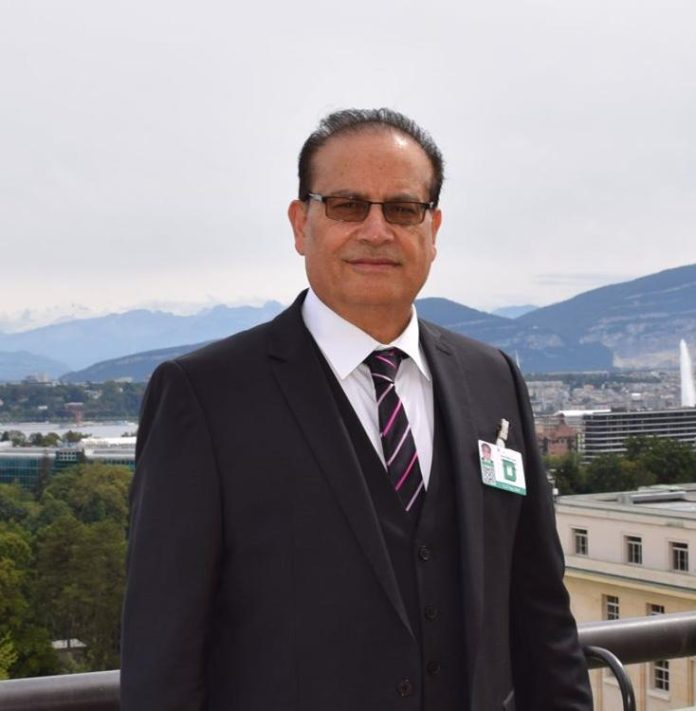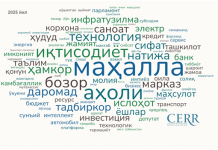By Qamar Bashir
In the United States, democracy is held sacred, yet the question lingers uncomfortably: who really governs this nation—Congress, the embodiment of representative debate, or the president, who issues executive orders at a breakneck pace? Nowhere is this tension more alive than in the story of migration—both of people and of power itself—whose routes are shaped by promises, implemented under seal, and tested by the courts.
When Donald Trump took the oath for his second term in January 2025, the air crackled with urgency, a promise that the long stalemates of Congress would no longer stall America’s progress. In just 147 days, he signed his 163rd executive order—already surpassing the 162 orders President Biden issued in his entire four-year term. By the end of August, that tally had climbed to 198. Coupled with his 220 first-term orders, he had, in fewer than five years, issued more directives than any modern president. Only Franklin D. Roosevelt surpassed his total—and FDR’s presidency spanned a global depression and climate of war. The executive pen, once a tool of occasional recalibration, had become Trump’s primary method of governing, as if power itself had picked up suitcase and migrated swiftly from Congress to the Oval Office.
Many of these orders moved along the path of public endorsement. Campaign promises that had galvanized voters—slashing immigration, limiting foreign trade, remodeling federal architecture—were delivered with immediate force. Endorsed by rallies and ballots, these promises took shape: tariffs were imposed, immigration enforcement tightened, Washington’s monuments and streets cleaned up, and classical architecture mandated for new federal buildings. It was governance by immediate mandate, enacted before Congress could deliberate.
Yet these rushed crossings hit legal checkpoints. One order targeted birthright citizenship—stripping citizenship from children born in the U.S. to non-citizen parents. Courts swiftly struck back: judges across the country blocked it, arguing the constitutional protections of the 14th Amendment could not be overturned with a signature. Federal circuits remain divided, the issue escalated toward the Supreme Court, stalled in multiple hearings—a charge halted gate by gate.
Another directive aimed at expanding “expedited removal,” allowing deportations without judicial hearings for immigrants anywhere in the country. The Justice Department warned of expedited processing for up to a million deportations per year. But a district judge ruled that violating due process would be unconstitutional, and several states filed lawsuits. Detention centers overflowed, protests erupted, and the eruption of legal action forced a partial retreat. Trump’s rapid implementation had collided with America’s entrenched legal norms.
These legal battles multiplied. Orders banning transgender individuals from military service, cutting funding for gender-affirming care, and revoking passports with non-binary markers were met with court injunctions. Judges held fast to equal protection and free speech, labeling some orders as discriminatory. The result: a patchwork where federal policy differed starkly across regions, depending on the rulings in local courts. Democracy, in its procedural wisdom, slow-marched through lawsuits and hearings.
But even as rolling injunctions slowed or blocked dozens of orders, Trump’s economic narrative flickered bright. In the second quarter of 2025, U.S. GDP growth was revised to 3.3 percent—above the initial 3 percent estimate and marking a dramatic rebound from a 0.5 percent contraction in the first quarter. Consumer spending rose, AI investments surged, and stock indices climbed to new highs. The economy, for the moment, seemed to reward a government that governed swiftly. The Federal Reserve, sensing softening labor data, eyed interest-rate cuts. Consumer confidence, bolstered by job stability and spending, contributed to this upward trend.
Yet cracks appeared below the surface. Analysts warned of stagflation risks—tariffs pushing prices higher even as growth slowed. The OECD revised U.S. growth expectations downward, and economists cautioned that Trump’s economic rebound was fragile, driven by temporary factors like inventory shifts rather than sustainable demand.
On the geopolitical front, Trump touted himself as a peacemaker, claiming to have ended multiple wars—from conflicts in Africa to Asia. The reality was murkier: several of the cited wars continued, deals remained incomplete, and analysts called his claims exaggerated. At home, however, aggressive immigration enforcement, trade wars, and detention centers like “Alligator Alcatraz” symbolized executive power in action—power that enforced campaign promises but also fractured international goodwill.
Even policies aimed at improving the capital’s image became flashpoints. A White House order created a “Washington Safe and Beautiful” task force, deploying Park Police and the National Guard to clean encampments, scrub graffiti, and restore order around monuments. Soon after, another directive mandated classical architecture in new federal buildings—a symbolic reclaiming of civic aesthetics. Critics saw it as symbolism over substance, an aesthetic takeover rubber-stamped without consensus.
Behind the symbolic momentum lay legal resistance and civic concern. Immigration centers were sued by environmental groups and tribal nations, courts ordered facilities dismantled, and resistance grew across states, courts, and civil society. Difficult public policies had been enacted swiftly—but their permanence remained in question.
This generational tension—between unchecked executive speed and slow democratic process—was the hallmark of a nation on edge. Trump’s rapid delivery on campaign promises demonstrated both the power and peril of executive orders as tools for public mandate. Speed can enact change—but velocity alone is not governance.
Ultimately, the American story of migration—from promises to policy, from the Oval Office to the courtroom—asks a foundational question: Can democracy thrive when its channels are bypassed? Executive orders are powerful locomotives: they move policy quickly, visibly, sometimes effectively; but without democratic gears, they risk derailment.
In the end, Trump’s second term became the most vivid demonstration of that balance. His rapid implementation of executive orders did enable him to fulfill campaign promises, ease trade tensions, reshape government aesthetics, and catalyze economic growth—however briefly. Yet courts stood as gatekeepers, injunctions blocked orders, cities resisted, and allies questioned U.S. reliability. Power migrated swiftly—but settling it into the republic requires democracy’s architecture: deliberation, legitimacy, and institutional consent. As America moves forward, the question remains: will swift power prove foundational—or fleeting?

















